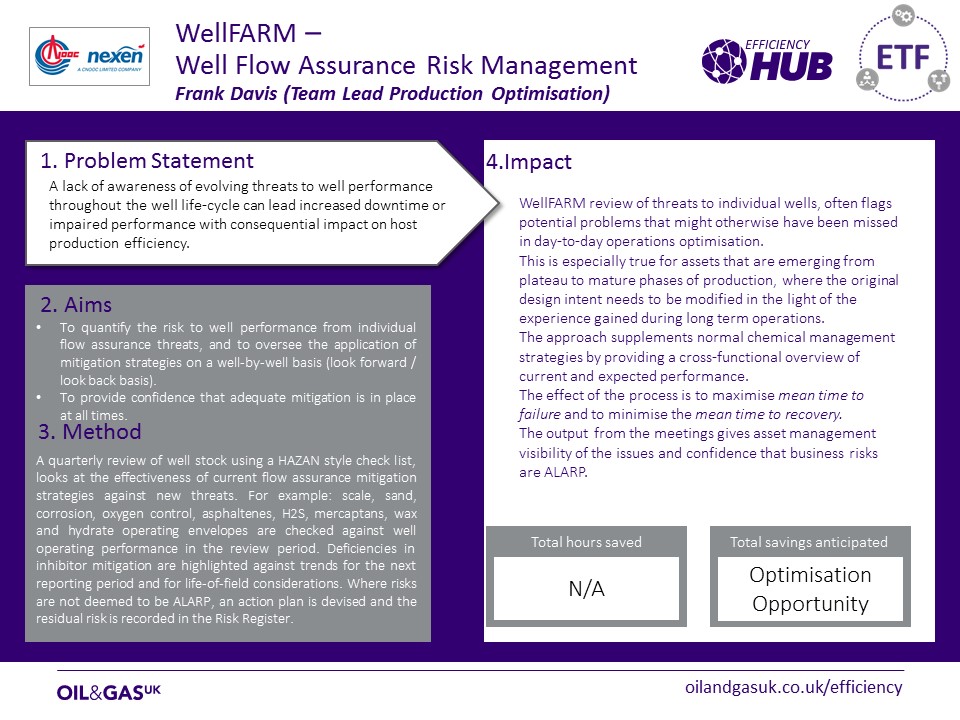Nexen – WellFARM – Well Flow Assurance Risk Management
Problem Statement
A lack of awareness of evolving threats to well performance throughout the well life-cycle can lead increased downtime or impaired performance with consequential impact on host production efficiency.
Aims
To quantify the risk to well performance from individual flow assurance threats, and to oversee the application of mitigation strategies on a well-by-well basis (look forward / look back basis).
To provide confidence that adequate mitigation is in place at all times.
Method
A quarterly review of well stock using a HAZAN style check list, looks at the effectiveness of current flow assurance mitigation strategies against new threats. For example: scale, sand, corrosion, oxygen control, asphaltenes, H2S, mercaptans, wax and hydrate operating envelopes are checked against well operating performance in the review period. Deficiencies in inhibitor mitigation are highlighted against trends for the next reporting period and for life-of-field considerations. Where risks are not deemed to be ALARP, an action plan is devised and the residual risk is recorded in the Risk Register.
WellFARM review of threats to individual wells, often flags potential problems that might otherwise have been missed in day-to-day operations optimisation.
This is especially true for assets that are emerging from plateau to mature phases of production, where the original design intent needs to be modified in the light of the experience gained during long term operations.
The approach supplements normal chemical management strategies by providing a cross-functional overview of current and expected performance.
The effect of the process is to maximise mean time to failure and to minimise the mean time to recovery.
The output from the meetings gives asset management visibility of the issues and confidence that business risks are ALARP.
Total Savings Anticipated
Optimisation Opportunity
Click on the image above to download the case study.



